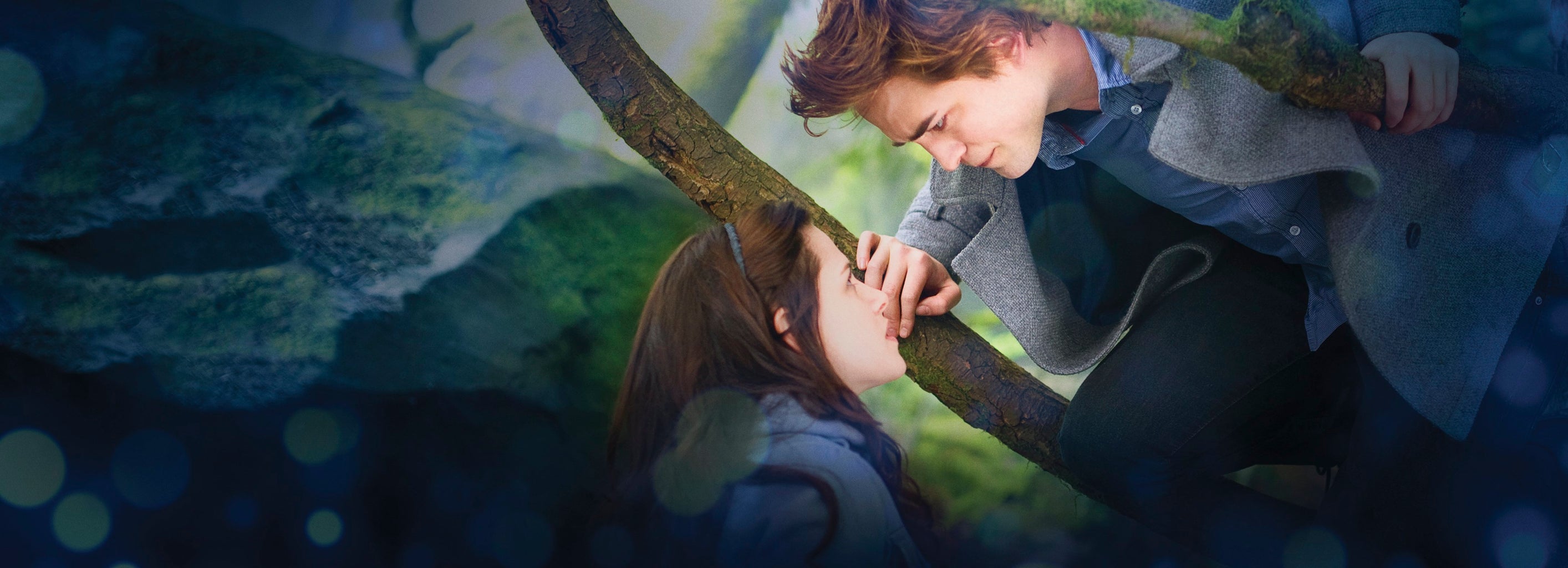Romance novels always used to go like this:
Boy meets girl.
Boy kisses girl.
Boy falls for girl.
And then they live happily ever after.
Nowadays, we have more intense and sexualized versions of this storyline, such as Fifty Shades of Grey, Twilight, Hush Hush, and other popular book series. The list goes on and on, with stories of girls complacent in their narrative, content with their men being overtly possessive, passive-aggressive, and hostile creatures writhing in jealousy and lust. The love interests are nearly always hyper-sexualized alpha-males seeking the protagonist to submit, obey, and accommodate. This should raise alarm.
What kind of messages are we promoting, anyway?
Beautiful and Disastrous
A novel I just finished further alerted me to this intriguing pattern I have been witnessing, incredulously.
Set on a university campus in the northeastern United States, Beautiful Disaster by Jamie McGuire revolves around the protagonist, Abby Abernathy, and her sudden romance with college bad boy, Travis Maddox. Referred to as “The Walking One-Night Stand,” Travis is intent on pursuing his next challenge… Abby. Met by her constant resistance to his charm, Travis devises a plan to spend time with her by concocting a bet between them with month-long consequences. If Travis loses, he must remain abstinent, and if Abby loses, she has to live at his apartment.
What transpires during and after these events are what is truly frightening.
Upon Abby sleeping with Travis, then sneaking out of the apartment with all her belongings, Travis discovers her absence a couple hours later. Abby is greeted into the morning with calls every five minutes for the span of at least an hour from her friends that live with Travis, if not also Travis, himself.
Here’s an excerpt from Beautiful Disaster on pages 175-176:
| “’Travis is a f***ing wreck! He won’t talk to us, he’s trashed the apartment, threw the stereo across the room… Shep can’t talk any sense into him!'” …’What did you do?’ I assumed he would be upset with me; I didn’t know he’d fly into a rage. ‘I…don’t know,’ I swallowed. ‘He took a swing at Shep when he found out we helped you leave. Abby! Please tell me!’ she pleaded, her eyes glossing over. ‘It’s scaring me!’ …’It’s something else, Abby. He’s gone f***ing nuts! I heard him call your name, and then he stomped all over the apartment looking for you. He barged into Shep’s room, demanding to know where you were. Then he tried to call you. Over and over and over,’ she sighed. ‘His face was… Jesus, Abby. I’ve never seen him like that.’ ‘He ripped his sheets off the bed, and threw them away, threw his pillows away, shattered his mirror with his fist, kicked his door… broke it from the hinges! It was the scariest thing I’ve ever seen in my life!’” |
Unfortunately, this is not an isolated incident, as Travis seems to be stuck in a pattern where he acts violently whenever he doesn’t get his way. In response, Abby resubmits herself to him, forgiving him and dismissing his (in a normal world) inexcusable behavior. Essentially, he is an adult throwing a violent temper tantrum.
While he never takes out his anger violently on Abby per say, he does resort to violence directed at other men when they seem to get in his way romantically. There are numerous occasions when Abby shows genuine interest in other guys, like perfectly good and kind Parker Hayes, yet is either deceived, tricked, manipulated, teased, or forced to exit the situation because Travis doesn’t want her to be with anyone else, yet can’t seem to treat her right either.
Twilight saga sadness
Another example of a book in the romance genre that follows this pattern is none other than the cult classic, Twilight by Stephenie Meyer. Bella Swan, a shy and quiet high schooler moves to the small town of Forks, Washington to live with her divorced father. Everyone seems to want to have a piece of the new girl, and Edward Cullen, the dark and brooding (vampire) teen, is no exception.
He is the enigmatic and mysterious type, which for some reason always lures girls in… including Bella even after she discovers Edward has been watching her sleep without her knowledge or permission, stalks her every movement throughout the town, and is rude, sarcastic, and snarky upon early interactions. And let’s not get started on the fact that Edward is, as I mentioned earlier, a vampire, so he consumes blood, sparkles in sunlight, has superpowers, and lives forever… qualities that should deter a girl from wanting to commit her forever to him.
Time and time again, numerous romance novels, along with their social media book community counterparts, push forth the idealization and normalization of romantic and sexual relationships that are so obviously toxic, sick, and full of major red flags if they were taken out of the context of a fictional book. They romanticize bad relationship behaviors, labeling it as ‘okay’ when people advertise these stories as ‘dreamy,’ ‘hot,’ and ‘spicy’ reads. I would only hope that it doesn’t take a trained eye to recognize these examples of relationships as being unhealthy, but we need not be that naive.
This is different from writing about toxic relationships in a constructive sense like a memoir or novel with the right message that this isn’t love. This is promoting poor behavior and slapping a “buy now!” sticker on it.
Let’s Talk Numbers
A key demographic making up the audiences and cult followings of authors like Jamie McGuire, E. L. James, Stephanie Meyer, and more are our youth — adolescents and young adults. In fact, according to Nielsen Bookscan, the audience in 2015 for the romance genre is 31% females between the ages of 13 and 29. The number has been projected to have grown since.
Further, Rachel Nuwer writes for Smithsonian Magazine that, “No one doubts that teenagers can act impulsively or use poor judgment at times, making parents and teachers sometimes question the processing (or lack thereof) occurring in young people’s brains. But there’s also a softer side to adolescent minds. Scientists say the young, impressionable brains are vulnerable, dynamic, and highly responsive to positive feedback.”
Are these the messages we want to send our youth or subject them to? Are these the relationships we want to romanticize and lust after? By putting forth these narratives with such admiration, we are putting toxic relationships on a pedestal and promoting unhealthy ideas of what a loving relationship should look like. Often, these book character relationships serve as the role models for our younger generations.
If young girls are reading these novels, of course we must worry that they will mirror these toxic and unhealthy relationships in their own lives. If they are seeing promotion of these relationships on platforms like Instagram, TikTok, or others, we should be concerned their next boyfriends or girlfriends will turn out the same as Travis Maddox or Edward Cullen – violent, snarky, rude, and physically or emotionally dangerous.
The Bigger Picture
This matter should be presented as a greater discussion than just pertaining to the romance genre, but for all fictitious books, and if not also by extension, perhaps extending to authors and writers in general, along with social media content creators.
Why?
Ethical accountability. Social responsibility. Moral standards.
Yes, these are the words that should be swarming our minds the moment someone signs their name to any book’s final page or schedules a post on a social media platform. It may not be the first phrases that come to mind when we think of an author or content creator, but are certainly some of the most significant.
It begs the question: Why do authors write? Why do users post? What exactly is the payoff? Is it for the fame or fortune? Is it to fulfill a lifelong dream of embracing the freedom to express oneself openly in the chosen medium? Or is it to extend a hand and touch the souls of the readers or followers through vivid storytelling and emotional vulnerability?
No matter their deepest reasons behind their writing or creating, one should always be “to make an impact.” It is imperative to recognize that the written word is a form of mass media and reaches vast audiences with a simple click in countless formats. With that simple click, lives can be changed, paths can be altered, and lessons can be learned… if given the chance.
Perhaps we need reminding of how impactful the written word can be and a suggestion of how we can frame our values and morals to help others. Jackie Robinson once said, “A life is not important except in the impact it has on other lives.”
“A life is not important except in the impact it has on other lives”
Jackie Robinson
Mr. Robinson was clearly ahead of his time, particularly considering how widely applicable this quote still remains, ringing true even in the decades since his 1972 death. That is precisely the mindset more individuals need in this day-and-age.
Taking A Stance
I understand that not everyone views life the same as me, so my argument exists more as a “we all should strive for a more mindful impact” instead of “we all must strive for a more mindful impact.” In a perfect world, ‘should’ would become the reality. Despite this, I cannot impose my morals on others, but I can certainly speak my mind. I do recognize that I cannot expect others to fall in line with this request, but rather put their other, more realistic, priorities first like making ends meet to put food on the table, enjoying the art of writing and creating, or pursuing their lifelong goal of becoming that big-time author featured on the New York Times Bestsellers List.
However, I agree that the line has to be drawn somewhere for the sake of these individuals’ sanity and stress control. But where do we draw that line?
On the one hand, we must remind ourselves of the footprint we leave on the world, our own little (or big!) legacies we leave behind. On the other, authors cannot be expected to limit their word choice or restrict their imagination with what kind of story should be told. Users with considerable followings cannot be held to a different standard than anyone else, thus expected to redact their ideas and message to satisfy my pleas.
Censorship is not an option.
Further, authors and content creators shouldn’t be shouldering all the blame for their narratives, because it is how we perceive these stories that matter too. Maybe we, too, are responsible. After all, as a marketing student I have learned that ‘Perception is our reality.’ Conceivably, interpretation, not just the presentation, maintains involvement in these situations.
A broader perspective might be necessary to be able to expertly see through these romance novels and other narratives that romanticize these rather toxic relationships and behaviors. Of course, younger demographic groups do not always have the experience or self-confidence to back up this more worldly view, but we might not have much other choice and we owe it to our younger selves to try to guide the younger generations to practicing positive relationships.
the Bottom line
- Let’s provide more examples of positive role model relationships across genres, platforms, and mediums.
- Let’s stop idealizing toxic ones on social media, particularly BookTok and Bookstagram, like the ‘hot’ and ‘spicy’ relationships that wield so many red flags.
- Let’s take the time to explain to our children, little siblings, younger friends, and ourselves what love should look like in a healthy way.
The problem is, it can’t stop at just me.
I’m asking you, the reader, to take action. Join me in trying to give our youth relationships to look up towards so they know what love should look like in a healthy manner. Without these healthy examples, particularly young girls will submit themselves to romantic and sexual relationships not worth romanticizing about that end in violence, disorder, and unhappiness. Imagine your little sister, your best friend, or younger self in that position. They are our future and they deserve guiding and protection as they gain confidence and learn who they are.
So, next time you pick up a romance novel, I invite you to think critically yet openly, and be mindful of the author’s message and those other audience members. Maybe then we can break the reinvented ‘boy meets girl’ cycle.




